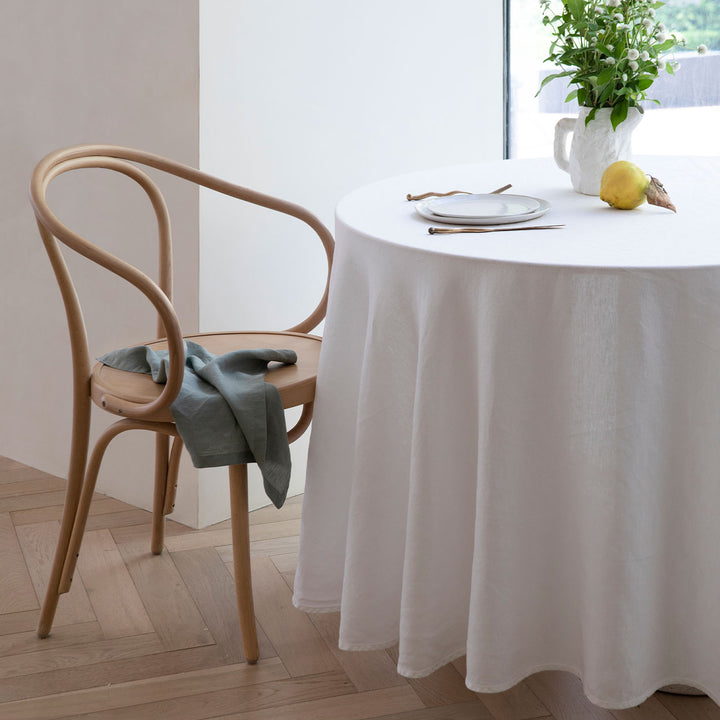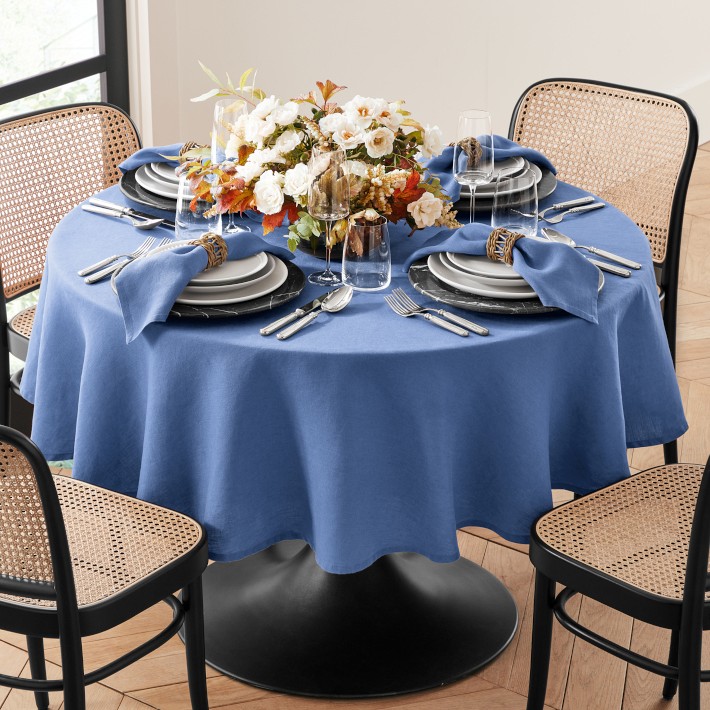Linen Textile Innovations: Checking Out Modern Trends and Creative Applications in Design and Fabric Market
In the realm of fabric technologies, linen has actually emerged as a classic yet flexible product that remains to astound lovers and designers alike. With an abundant history deeply linked with craftsmanship and style, linen material is experiencing a resurgence in the modern-day age. From sustainable production techniques to advanced weaving innovations, the evolution of linen is improving the landscape of the fabric sector. As we look into the realms of innovative design applications and the introduction of linen blends and crossbreed fabrics, a brand-new phase unfolds in which bed linen's duty in future fabric developments takes facility phase.
Sustainable Practices in Linen Production
Sustainable practices in linen production have actually ended up being progressively important in the textile industry's efforts to minimize ecological effect and promote honest sourcing methods. Linen, an all-natural fiber stemmed from the flax plant, uses an array of advantages such as durability, biodegradability, and breathability. However, standard approaches of bed linen manufacturing can entail significant water consumption, pesticide use, and energy-intensive procedures.
To deal with these difficulties, many textile suppliers are taking on sustainable methods throughout the bed linen manufacturing procedure. This consists of sourcing flax from organic farms that avoid unsafe pesticides and chemicals, implementing water-efficient retting techniques to remove fibers from the flax stalks, and using eco-friendly dyes and surfaces. Additionally, some business are buying sustainable energy sources to power their production facilities and minimizing waste via recycling and upcycling initiatives.
Technological Developments in Bed Linen Weaving
With the growing emphasis on lasting practices in linen manufacturing, the textile sector is currently experiencing a surge in technical developments specifically aimed at reinventing the art of linen weaving. These developments are improving the method linen materials are produced, providing raised effectiveness, top quality, and imagination in weaving techniques.
One of the crucial technical improvements in bed linen weaving is the combination of computerized looms. These sophisticated looms are equipped with software that permits complicated and elaborate layouts to be woven with accuracy. By digitizing the weaving procedure, manufacturers can accomplish higher consistency and accuracy in their bed linen materials.
In addition, innovations in yarn spinning technology have allowed the production of finer and even more sturdy bed linen threads - table cloths. This causes softer and smoother linen fabrics that retain their top quality also after several uses and washes
Furthermore, the development of eco-friendly dyeing processes and coatings for linen materials is acquiring grip. These sustainable methods not just reduce the environmental influence yet additionally satisfy the enhancing customer demand for fairly generated textiles.
Creative Design Applications for Bed Linen
Innovative imaginative strategies are significantly forming the creative design applications for linen in the fabric industry. Linen's natural aesthetic allure and capacity to mix with various other fabrics make it a favored choice for developing distinct garments and accessories that provide to the eco conscious customer.
Furthermore, designers are explore bed linen in home decor, using its durable and breathable nature to craft fashionable home furnishings such as curtains, bed linen, and upholstery. The structure and drape of linen bring a feeling of sophistication and comfort to interior areas, including a touch of elegance to modern homes.

Bed Linen Blends and Crossbreed Fabrics

Hybrid materials, on the various other hand, take the principle of mixing a step further by integrating extra components such as metal threads, recycled products, or conductive fibers. These innovative textiles not just expand the layout possibilities yet also introduce useful elements like conductivity, antimicrobial properties, or enhanced durability. Crossbreed textiles are progressively being used in various markets, consisting of style, indoor style, and technical fabrics, where the need for multifunctional materials is on the increase.
Linen's Duty in Future Fabric Innovations

In the realm of future textile advancements, linen is anticipated to be a vital player in the development of innovative functional textiles. Developers and researchers are checking out means to improve linen's fundamental high qualities via technological improvements, such as integrating clever textiles, nanotechnology, and efficiency surfaces. These technologies aim to raise linen's efficiency qualities, making it suitable for a broader variety of applications, from activewear to safety apparel.
Moreover, the mix of linen with other natural or synthetic fibers opens unlimited opportunities for creating unique fabrics with distinct buildings and functionalities. By leveraging linen's qualities and checking out ingenious blends, the fabric sector is poised to present interesting advancements that accommodate advancing consumer requirements and sustainability demands.
Conclusion
In verdict, the expedition of sustainable methods, technical innovations, innovative style applications, linen blends, and its function in future fabric innovations highlight the continuous advancement of linen fabric in the modern style and textile industry. With a concentrate on innovation and Find Out More creative thinking, the flexibility and eco-friendly nature of linen make it a valuable material for developers and manufacturers alike, leading the way for additional developments and innovations in the area of textiles.
As we dig right into the worlds of imaginative design applications and the introduction of linen blends and hybrid textiles, a brand-new phase unfolds in which linen's role in future fabric innovations takes center stage.
Discovering the blend of linen with various other materials has led to the development of ingenious blends and crossbreed textiles in the contemporary textile industry. Bed linen blends provide a distinct mix of the attributes of linen with those of other fibers, resulting in materials that have boosted residential or commercial properties such as enhanced toughness, enhanced draping, and decreased wrinkling.The evolution of bed linen blends and crossbreed textiles has set the stage for Linen to play a crucial duty in driving future textile innovations.In the realm of future fabric developments, bed linen is expected to be a key gamer in the advancement of advanced functional textiles.